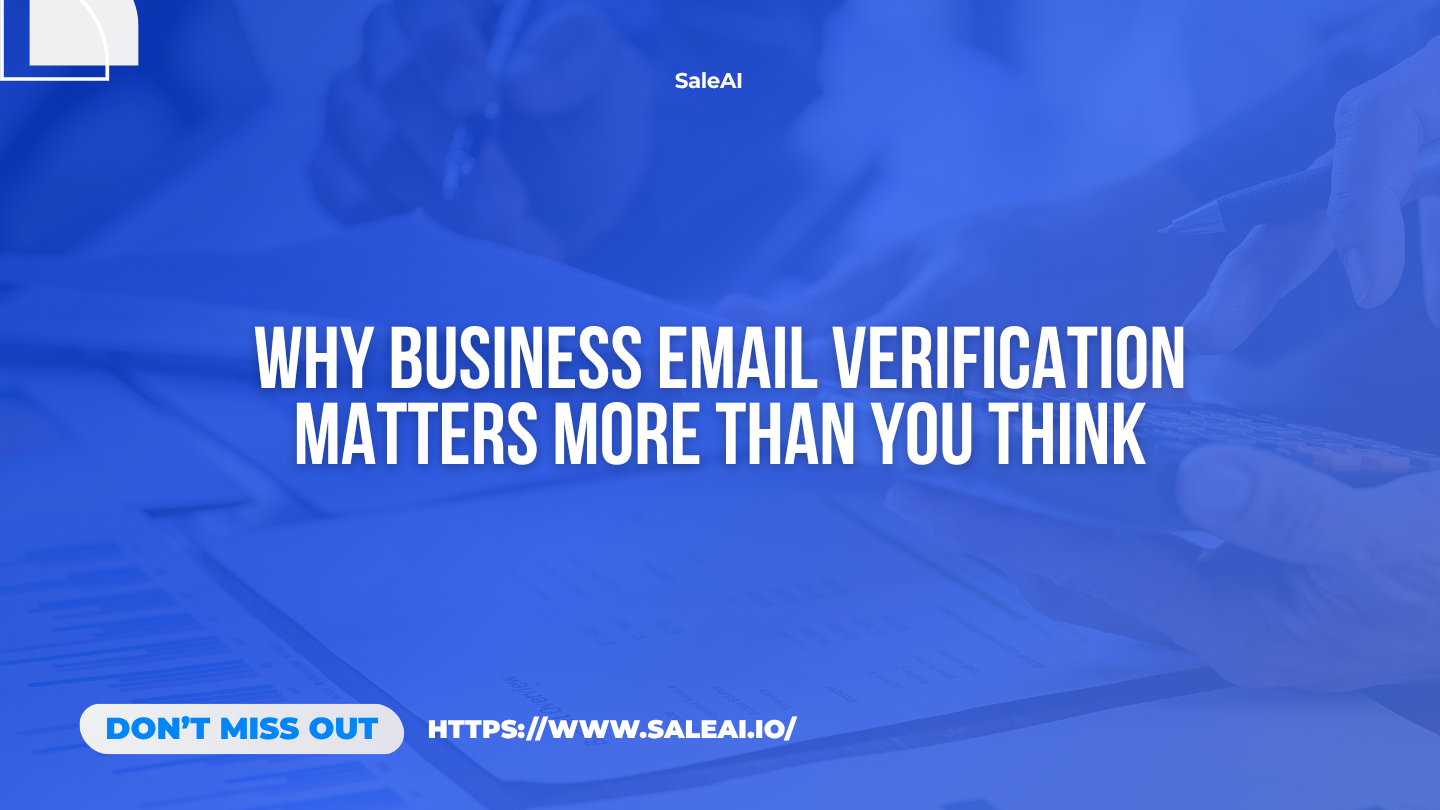
Sending to the wrong email doesn’t just waste time—it hurts your sender reputation, reduces deliverability, and kills trust.
But many teams still misunderstand whatbusiness email verificationreally means.
Let’s clear up some myths—and show you how SaleAI gets it right.
Myth 1: If it doesn’t bounce, it’s valid.
Wrong.
Many unverified emails don’t bounce immediately—but they still damage your domain over time by:
-
Increasing spam complaint risk
-
Getting silently filtered out
-
Triggering blacklists if abused
SaleAIchecks:
-
Domain existence
-
Mail server (MX) records
-
Role-based address flags (e.g., info@, sales@)
-
Spam trap indicators
Myth 2: All emails in my CRM are still good.
Not necessarily.
Employees leave. Domains expire. Lists age out fast.
SaleAIoffers:
-
Bulk re-verification of uploaded email lists
-
Real-time API verification for new contacts
-
Highlighting of outdated or high-risk entries
Myth 3: Public emails are always trustworthy.
Not always.
Public = findable ≠ active or clean.
Some may be scraped, duplicated, or fake.
SaleAIverifies every email with:
-
SMTP handshake tests
-
Domain match scoring
-
Activity patterns (when integrated with email sends)
When You Should Run Email Verification
-
Before launching a cold email campaign
-
After importing new leads from external sources
-
When open or reply rates drop suddenly
-
After changing your sending domain or provider
SaleAI’s Email VerificationBuilt-In Features
| Feature | Description |
|---|---|
| Domain & DNS check | Ensures the domain can receive emails |
| MX record validation | Confirms a valid mail server exists |
| Risk scoring | Flags temporary/disposable/risky addresses |
| Integration ready | Works with contact imports, CRM, and outreach tools |
You don’t need another separate tool—verification is part of the SaleAI outreach flow.
Clean Data = Better Results
Bad data leads to bad email performance.


